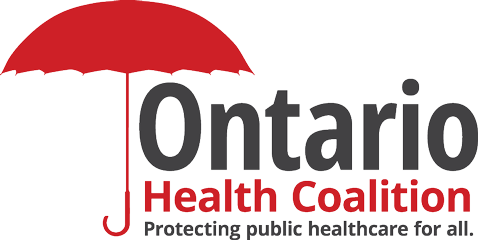Academic report warns against the privatization of hospital surgeries
Posted: November 18, 2025
(November 17, 2025) By: Maegen Kulchar, The Kingston Whig Standard
A Professor from England is warning Ontarians about the consequences for-profit clinics offering surgeries will have on the public sector.
Pollock has not only witnessed the consequences of privatizing surgeries in the United Kingdom such as cataracts, hip and knee replacements, but she along with a colleague have compiled a report analyzing the negative effects.
The report compared the health-care strategies of two countries within the United Kingdom, England and Scotland.
Twenty years later, Pollock said the results are not what the government had expected. Instead of reducing wait times, her research shows not only longer wait times, but increased inequalities and a reduction in capacity in the public system.
“As you would expect, when you’ve got this rise in admissions, the waiting times fall, but what we found was that the waiting times fell less in England than in Scotland. So it was still higher at the end of the 22-year period,” explained Pollock, who said the private clinics also lead to inequality among patients. “The private sector was preferentially selecting the richer patients and not the poorer. So, there was a growing inequality for hips and knees.”
“That’s because the private clinics don’t have intensive care, they don’t deal with sick patients, so they need the healthy patients. The healthy patients tend to be drawn from the richer parts of the community. They have less of the comorbidities,” said Pollock.
According to the report, between 2016 and 2024, England saw a 20- to 60-per-cent rise in for-profit clinics for hip and knee surgeries, which has led to the creation of more than 155 private clinics.
There are also 175 clinics for cataracts.
In addition, the report claims that the use of private clinics have led to an increase in readmissions due to complications.
Pollock said the other issue revolves around hospital staff who have moved away from the public sector and into the private clinics. While it may be an attractive move, considering you only have to complete one particular surgery, it creates a void within the public hospital.
“Now the staff are split. More and more of the doctors are exiting into the private clinics, which is the quick and easy stuff, leaving the public sector with doctors and nurses to deal with all of the complex cases,” explained Pollock, who added the private sector also receive a lot more funding due to a tariff system.
While Ontario doesn’t have any private clinics that conduct knee or hip surgeries, it does have clinics that offer cataract surgery.
“Most of the private clinics that we see that exist are selling cataract surgeries and the proportion has increased significantly, but nowhere near to where it is in England at this point,” said Mehra.
They are also paid more by the province according to Mehra.
“In Ontario, the private clinics are given a facility fee to cover their overhead and costs. Public hospitals are given a quality-based procedure funding amount. In private clinics for cataract surgeries here, its over $600 for the private clinic and its $500 per surgery for the public hospital. So its 20 per cent more per surgery for the private clinic,” said Mehra, who said that adds up to millions of dollars extra that they are paying the private clinics.
According to Mehra, there are two cataract clinics in Kingston, one of which offers cataract surgeries for a cost even though the procedure is covered by OHIP.
“We have a public health system. You are not allowed to charge a patient. It’s illegal under Ontario law. It’s unlawful under the Canada Health Act, which bans user fees and extra billing of patients. We pay through OHIP for our public health-care services,” said Mehra, who explained the extra cost is usually associated with an array of different lenses, a vision correction along with eye drops.
A Freedom of Information report gathered by the Kingston Health Coalition found that from Nov. 24, 2021, to Sept, 30, 2023, that particular clinic cost the public health-care system $2,036,779, a 56-per-cent increase over what it would have cost to perform the same services in the public hospital.
For Mehra, it’s a parallel situation to England that could get much worse if Ontario continues down the path of funding for-profit clinics.
“We’re calling on the Ford government to stop it. We’re calling on them to redirect that funding back to the public hospitals and away from the private clinics,” Mehra said.
“It’s a disaster for Ontario. It’s catastrophic,” echoed Pollock. “I would warn against it.”


